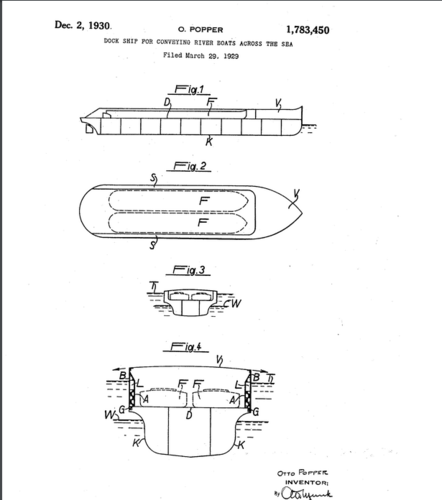US Amphibious Ships and Craft: An Illustrated Design History by Norman Friedman
Page 624
The British had actually considered converting merchant ships to carry tanks for a projected 1918 assault on Zeebrugge in Belgium. According to Lt. Comdr. The Hon. J. M. Kenworth, Sailors, Statesmen – And Others: An Autobiography, the Admiralty war staff proposed ‘to fit out old merchant ships too carry a dozen tanks each in their holds. The bows were to be reconstituted in such a way that they would run up on the beach in the known state of the tide….Slung up in the forepart of each vessel was to be a kind of drawbridge which would be lowered into the shallows and the tanks would trundle into the shallow water and ashore’. This proposal was ultimately rejected, but it was surely widely known within the war staff, and to the commander of the Zeebrugge attack, Adm. Sir Roger Keyes.
Anyone know if any designs were produced or was this just theoretical?
Page 624
The British had actually considered converting merchant ships to carry tanks for a projected 1918 assault on Zeebrugge in Belgium. According to Lt. Comdr. The Hon. J. M. Kenworth, Sailors, Statesmen – And Others: An Autobiography, the Admiralty war staff proposed ‘to fit out old merchant ships too carry a dozen tanks each in their holds. The bows were to be reconstituted in such a way that they would run up on the beach in the known state of the tide….Slung up in the forepart of each vessel was to be a kind of drawbridge which would be lowered into the shallows and the tanks would trundle into the shallow water and ashore’. This proposal was ultimately rejected, but it was surely widely known within the war staff, and to the commander of the Zeebrugge attack, Adm. Sir Roger Keyes.
Anyone know if any designs were produced or was this just theoretical?


